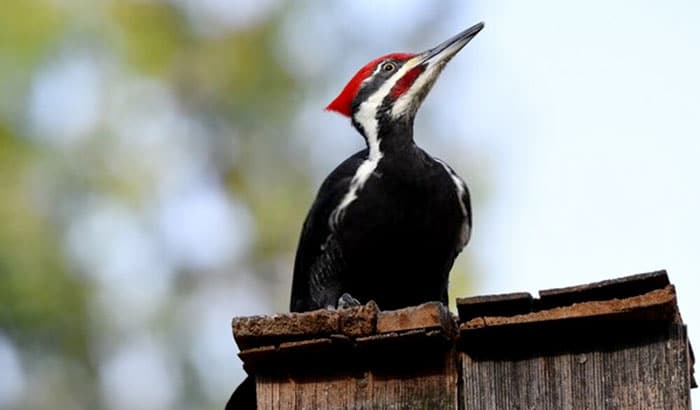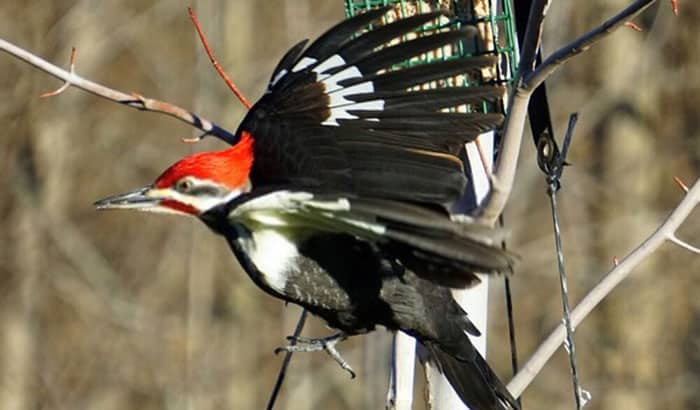If you are into attracting birds in your backyard, seeing different types of species visiting your bird feeder can bring a lot of fun and excitement. However, attracting a pileated woodpecker at your home is an entirely different story since it is one of the thrilling birdwatching activities you can experience at home.
But how to attract pileated woodpeckers in your backyard? Apparently, these very noisy and vocal birds are attracted to places that can carry their vast sizes. Also, these bird species will also spend on locations that provide their food requirements and their preferred environment. In this article, our team will list different ways to attract pileated woodpeckers in your backyard to satisfy your ultimate birdwatching experience.
Contents
Different Ways to Attract Pileated Woodpeckers in your Backyard
There are different ways to attract pileated woodpeckers in your backyard. All of these methods are related to their behavior, including their food requirements, habitat preference, and so on. So, if your home is near its natural habitat, then there’s a good chance that you will have these unique visitors in no time. But to increase the possibility of these birds visiting, please do the following techniques:
Food Preference
It is expected that the bird’s food sources and supply will be meager during the fall and winter seasons. Meaning, there is an excellent chance that these spectacular birds will visit your backyard for food. Naturally, the pileated woodpecker likes to eat carpenter ants supplemented by other forms of ants. Other foods they want to devour include termites, beetle larvae, and other insects such as grasshoppers, flies, and caterpillars. These birds also like to eat wild fruits such as elderberry, blackberries, poison ivy, holly, dogwood, and many more.
In your backyard, putting foods they like on the feeders will eventually attract them quickly. You can put bark butter, suet, safflower seeds, shelled peanuts, sunflower seed, and songbird fruit. These foods can enhance the chance of having these birds visit your place. Meanwhile, it can also help if the feeder is large enough to accommodate these birds, who happen to come in huge sizes.
Nesting Box
Usually, pileated woodpeckers are forest birds that need huge and standing dead trees. These birds also thrive in downed wood. You can also find these birds in young forests, but the chance of seeing them in the backyards of your home is higher if it is near large standing trees within the area. These birds are usually placed on a dead tree and are believed not to use a man-made nest box.
But, some nest monitoring programs have claimed that these birds tend to use man-made nesting boxes. That is, if the nesting box is located in a forested area that lacks dead or dring trees more than 21 inches in diameter. So, if your backyard fits this area while you install the required nesting box, there is an excellent chance of the pileated woodpecker visiting. Just make sure to hang the nesting box in a wooded area of 20 inches high.
Feeders
Having a suitable bird feeder in your backyard can make these birds visit your backyard. If they like your feeders, they may come in pairs, or if you are lucky, they may bring their young ones. Those huge upright feeders have been proven to be the bird’s preference, but they also like long wooden feeders and cylinder feeders.
The suet log feeder has also proved its worth as the most successful bird feeder to attract pileated woodpeckers. Since it is made of natural logs that are full of suet, they naturally bring excellent birds into your place. Those pileated woodpeckers will even get their young counterparts to these unique bird feeders. The upside of using this bird feeder is that it comes in winter and summer versions and is filled with nuts, mealworms, and crickets. It also caters to the younger woodpeckers with the robins and orioles during the summer.
Fruit-Bearing Trees and Shrubs
This technique is on the long-term side of attracting those beautiful birds in the backyard. Having fruit-bearing trees and shrubs in your backyard can help create interest in any pileated woodpeckers near you. This is because these trees and shrubs can be an excellent food source for these birds. So, if I were you, start planting these trees now and start attracting pileated woodpeckers once they grow. Some of these trees and shrubs include elderberry, greenbrier, persimmon, hackberry, dogwood, sassafras, holly, blackberries, and sumac.
Birdbaths
There is no question that water is essential to all birds, including the pileated woodpeckers. If you have to provide birdbaths in your backyard, these birds will not travel to far-flung places just to find water. So, if these birds do not see a natural source of water, there is a greater chance that they will be in your backyard once they need water. Another option for you to provide a water source for the pileated woodpeckers is to install a small patio pond which will surely get their attention.
Leave Dead, Dying, or Fallen Trees
Another way that will give you a chance to attract pileated woodpeckers is not to remove those dead or dying trees. Leaving those fallen trees behind offers an excellent place to look for their food and make a possible nesting place. If you want to attract these beautiful birds to your backyard seriously, do not remove fallen trees, or you can knock down those trees that are already dead.
Conclusion
Learning how to attract pileated woodpeckers should be an excellent decision if you like seeing these birds in your backyard. These birds provide a unique form of entertainment to the people in your household with their desirable traits and unique features. Pileated woodpeckers are indeed worth the effort to attract, and those tips we provided will certainly help in attracting these birds to your home.


